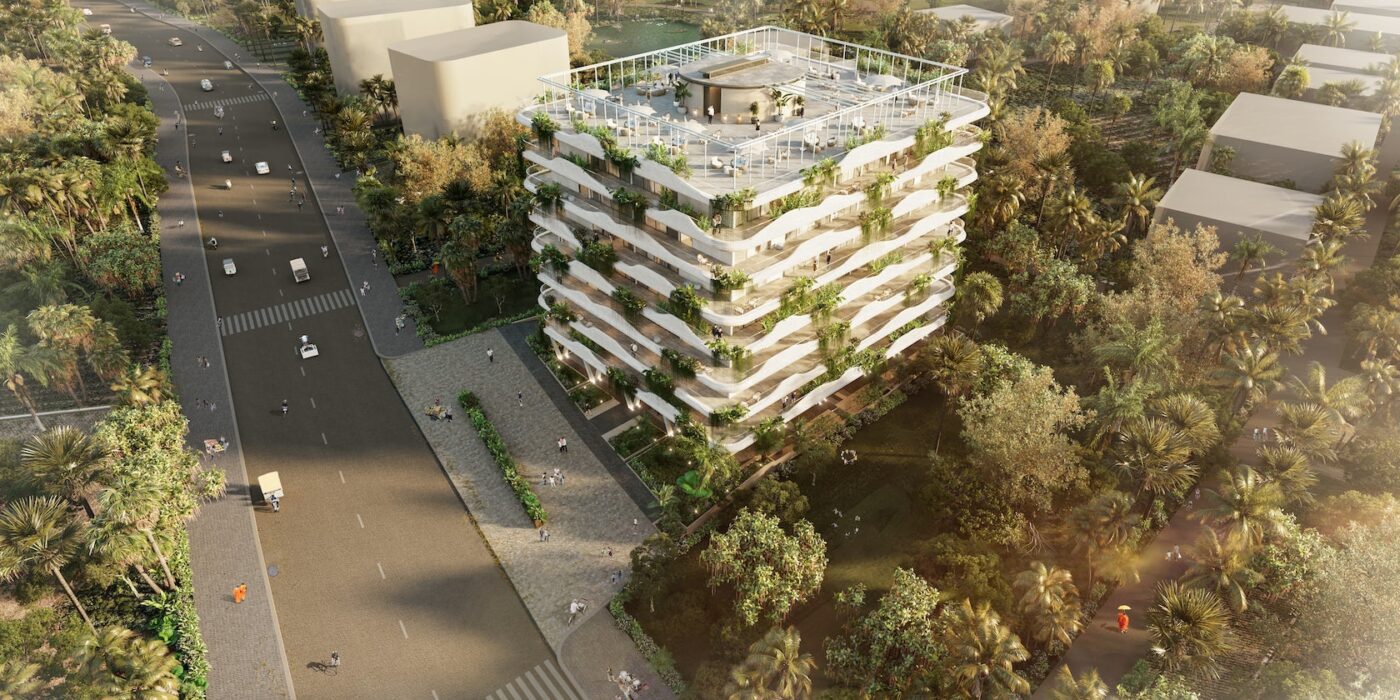Let the Light In: Maximizing Natural Light in the Design of Oudong Residence
Oudong Residence – aims to combine functionality with artistic flair, creating living spaces that are both functional and visually appealing. Drawing inspiration from a unified composition of textures inspired by nature itself, and cultural influences, the creative vision for this particular residence emphasizes sustainability, innovative use of materials, and a seamless integration of indoor and outdoor spaces. The project brief outlines the key requirements and objectives for the residence, with a strong focus on maximizing natural light, ensuring energy efficiency, and fostering a sense of community among the occupants. Furthermore, the design aims to be adaptable to the evolving needs of the residents, reflecting a dynamic and modern approach to residential architecture.
Architizer chatted with Alessandro Mangano, Partner at Architectural Engineering Consultants, to learn more about this project.
Architizer: What inspired the initial concept for your design?
Alessandro Mangano: The initial concept for the residential design was inspired by the desire to create a harmonious balance between modern living and nature. Drawing upon elements from various architectural styles, the design seeks to establish a seamless connection with the surrounding environment, while ensuring functionality and comfort for its inhabitants. The use of sustainable materials and energy-efficient technologies further reflects our commitment to preserving the ecosystem and promoting a greener future. Ultimately, this architectural concept aims to provide a haven where residents can enjoy the best of both worlds – contemporary living in tune with nature’s grace.

© Architectural Engineering Consultants
This project won in the 10th Annual A+Awards! What do you believe are the standout components that made your project win?
One of the key factors that contributed to the success of our project was the exceptional collaboration and communication among team members. This enabled us to leverage individual expertise and skills to move the project forward effectively. Another standout component was our dedication to continuous improvement and adaptability. By constantly assessing our progress and adapting our strategy, we were able to overcome challenges and ensure the timely delivery of a high-quality project.

© Architectural Engineering Consultants
What was the greatest design challenge you faced during the project, and how did you navigate it?
The greatest design challenge we faced during the project was effectively balancing aesthetics with functionality. Understanding the importance of incorporating visually appealing elements while maintaining the project’s core purpose was crucial to its success. To navigate this challenge, we fostered open communication among team members to ensure we understood their expectations and goals. Additionally, we incorporated iterative design processes, allowing for continuous adjustments and improvements while keeping both aspects in harmony.

© Architectural Engineering Consultants
How did the context of your project — environmental, social or cultural — influence your design?
The Cambodian context of the project had a significant impact on the design process, particularly in regards to the environmental, and cultural factors. The diverse ecosystems near the outskirts of Phnon Penh city, required us to carefully consider the environmental impact of our design, ensuring that it would support sustainable development in the region. Moreover, we incorporated elements into our design, to feel a deeper connection to the space while also respecting the traditions of the community. Lastly, we accounted for the social dynamics within the Khmer societies, emphasizing elements that encourage communal interactions and emphasizing harmony with the natural environment.

© Architectural Engineering Consultants

© Architectural Engineering Consultants

© Architectural Engineering Consultants

© Architectural Engineering Consultants
For more on the Oudong Residence, please visit the in-depth project page on Architizer.
Oudong Residence Gallery

